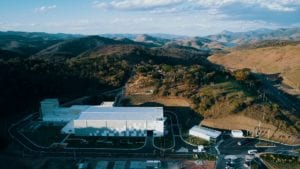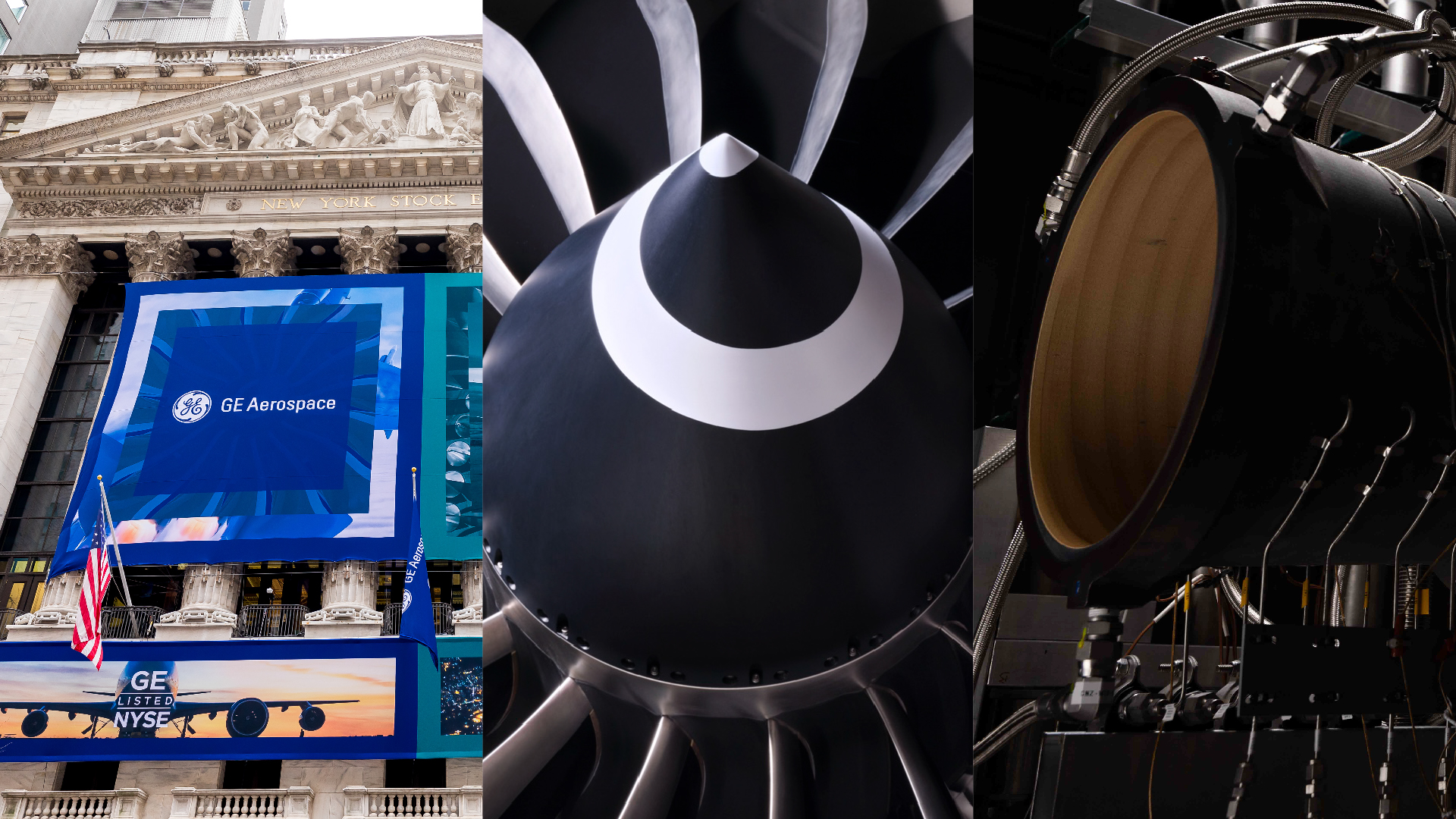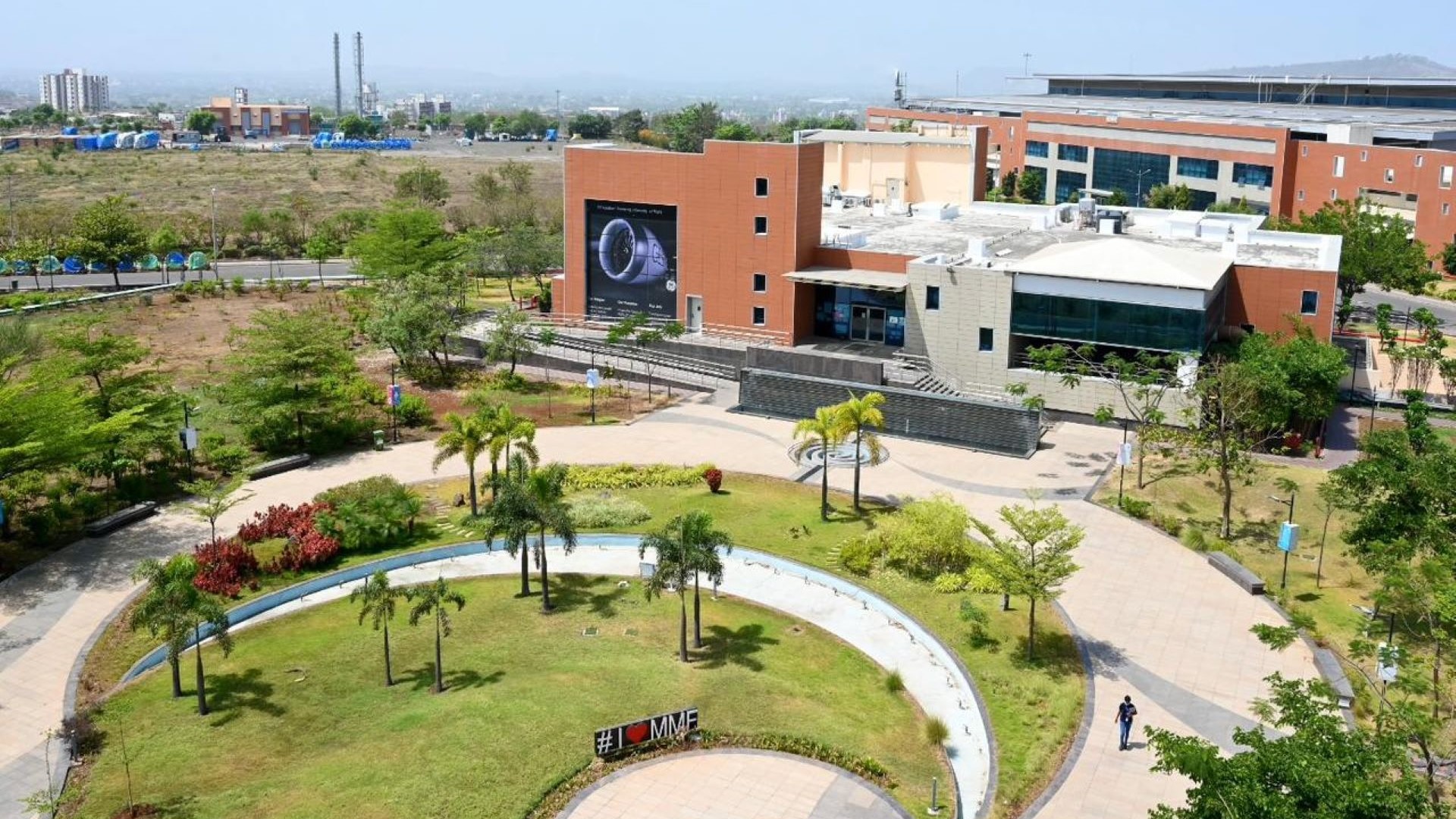Roaring to Life: GE Opens One of the Largest Engine Test Cells in the World
January 14, 2019 | by Jay Stowe
Carved out of the verdant hills roughly 40 miles north GE Celma’s headquarters in Petrópolis, Brazil, GE’s newest test cell has roared to life, providing additional testing capacity as demand for services for GE’s newest engines continues to grow.
Capable of testing the largest, most sophisticated GE engines in production, the Três Rios site initially will support the GEnx-1B engine powering the Boeing 787 Dreamliner. In the future, the site also will be used to support the CFM LEAP -1A and -1B engines powering the Airbus A320neo and Boeing 737 MAX families of airplanes, respectively.
The 62-acre site required a $50 million investment, more than 150 suppliers, and a workforce of 700 people to construct. The new test cell, which is estimated to generate more than 200 direct and indirect jobs, strengthens GE Aviation’s growth in Brazil. Três Rios is GE Aviation’s third test site in Brazil, after Petrópolis and Rio de Janeiro.
“We created and equipped this plant with the latest in world engineering,” says Julio Talon, president of GE Celma. “Control and command software have been installed for faster data processing, automatic fault diagnosis presented during the test, and results in real time, which will bring even greater speed and sturdiness to the process.”
There are three stages to a test: a complete engine inspection, followed by the test on the test stand and disassembly. “For the test, the engine is taken to a special room and connected to sensors remotely managed by stand staff,” says Diogo Cartier, Três Rios test stand leader. “In the test cell, the engine is subjected to the same flight conditions, such as speed, landing, and cruise flight. After strict performance calculations, it is decided whether or not the engine is approved.”
The site is equipped with software capable of telling in real time whether the engine is approved during each test phase. Among other significant innovations are a new GE silencer system that reduces noise emission and ergonomically enhanced engine lifts at workstations, ensuring greater safety for team members during engine prep. “These stations will also allow the application of a production system called ‘pulse line,’ which applies concepts of Lean Manufacturing,” says Claudia Carvalho, GE Celma growth and new projects leader.
With its impressive testing capacity, all eyes are focused on the ramp in CFM LEAP production. “Another benefit for the future growth of the Três Rios plant is that it has been built in a mirrored way,” says Marcelo Geraldo, project leader, “meaning it is possible to double it in size in the coming years, according to demand.”
Capable of testing the largest, most sophisticated GE engines in production, the Três Rios site initially will support the GEnx-1B engine powering the Boeing 787 Dreamliner. In the future, the site also will be used to support the CFM LEAP -1A and -1B engines powering the Airbus A320neo and Boeing 737 MAX families of airplanes, respectively.
The 62-acre site required a $50 million investment, more than 150 suppliers, and a workforce of 700 people to construct. The new test cell, which is estimated to generate more than 200 direct and indirect jobs, strengthens GE Aviation’s growth in Brazil. Três Rios is GE Aviation’s third test site in Brazil, after Petrópolis and Rio de Janeiro.
“We created and equipped this plant with the latest in world engineering,” says Julio Talon, president of GE Celma. “Control and command software have been installed for faster data processing, automatic fault diagnosis presented during the test, and results in real time, which will bring even greater speed and sturdiness to the process.”
 The 62-acre site required a $50 million investment, more than 150 suppliers, and a workforce of 700 people to construct.
The 62-acre site required a $50 million investment, more than 150 suppliers, and a workforce of 700 people to construct.
There are three stages to a test: a complete engine inspection, followed by the test on the test stand and disassembly. “For the test, the engine is taken to a special room and connected to sensors remotely managed by stand staff,” says Diogo Cartier, Três Rios test stand leader. “In the test cell, the engine is subjected to the same flight conditions, such as speed, landing, and cruise flight. After strict performance calculations, it is decided whether or not the engine is approved.”
The site is equipped with software capable of telling in real time whether the engine is approved during each test phase. Among other significant innovations are a new GE silencer system that reduces noise emission and ergonomically enhanced engine lifts at workstations, ensuring greater safety for team members during engine prep. “These stations will also allow the application of a production system called ‘pulse line,’ which applies concepts of Lean Manufacturing,” says Claudia Carvalho, GE Celma growth and new projects leader.
With its impressive testing capacity, all eyes are focused on the ramp in CFM LEAP production. “Another benefit for the future growth of the Três Rios plant is that it has been built in a mirrored way,” says Marcelo Geraldo, project leader, “meaning it is possible to double it in size in the coming years, according to demand.”





